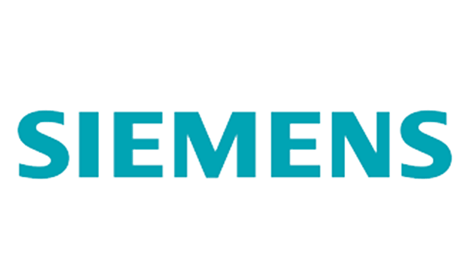Siemens – Siemens Xcelerator: Siemens and AWS simplify IT/OT convergence with an integrated edge-to-cloud experience
- AWS IoT SiteWise Edge now available as application on Siemens Industrial Edge Marketplace
- Seamless integration of edge and cloud helps customers optimize industrial operations
- Collect, organize, and analyze Industrial Internet of Things (IIoT) data at scale to make better, data-driven decisions
AWS IoT SiteWise Edge is now available on the Siemens Industrial Edge Marketplace. From there, customers can deploy it on Siemens Industrial Edge for centralized app and device management and combine it with a variety of other apps and edge devices, from Siemens and other vendors, to configure an IoT solution for their specific challenges. AWS IoT SiteWise Edge is an on-premises software that is part of the Industrial IoT services portfolio of Amazon Web Services Inc. (AWS) and can collect, process, and monitor equipment data locally, even without an internet connection.

Siemens Industrial Edge Marketplace
Siemens launched its open Industrial Edge platform in 2018, and expanded it in October 2021 with the Industrial Edge Marketplace, an independent, cross-vendor app store where industrial customers can buy apps from different IoT providers. The Industrial Edge platform and Marketplace are part of Siemens Xcelerator, an open digital business platform, which creates an open ecosystem for collaboration between customers, Siemens, and complementary third parties. And as such they are also part of Industrial Operations X, an open and interoperable portfolio for automating and operating industrial production.
“The addition of AWS IoT SiteWise Edge to our Industrial Edge Marketplace creates new opportunities to deploy edge and cloud applications at scale and manage closed-loop automation workflows”, says Rainer Brehm, CEO of Factory Automation at Siemens. “Our customers are constantly facing new challenges to boost productivity, flexibility, and sustainability across their production processes. To help them, Siemens is expanding its traditional strong OT portfolio by integrating IT and software capabilities into automation with Industrial Operations X.” With Industrial Operations X, Siemens provides its customers also with an integrated portfolio of operations software combined with an open ecosystem.
Leveraging edge and cloud to simplify IT / OT integration
With AWS IoT SiteWise Edge on Industrial Edge, AWS and Siemens will accelerate and simplify the machine-to-edge and edge-to-cloud experience. Customers need less time to start ingesting data into the AWS cloud and use further AWS services, e.g., for simplified data and workflow management or Industrial artificial intelligence (AI) workflows on the edge and the cloud. Today, the majority (74%) of customer IoT projects remain isolated experiments (Source: Beecham Research “Why IoT projects fail”), require a long period of time to deploy at scale or do not achieve the expected return on investment (ROI) due to a heterogeneous landscape of OT (Operational Technology) and IT systems. This results in data being difficult to access and use, as it is often restricted to a single machine or shop floor. Customers can now start to unlock the value of industrial data by processing it in workflows which today they must choose to run either on the edge or in the cloud. AWS IoT SiteWise Edge on Siemens Industrial Edge helps build a secure, flexible edge-to-cloud infrastructure that can deliver data where it is needed and run hybrid workflows, simplifying IT / OT convergence.
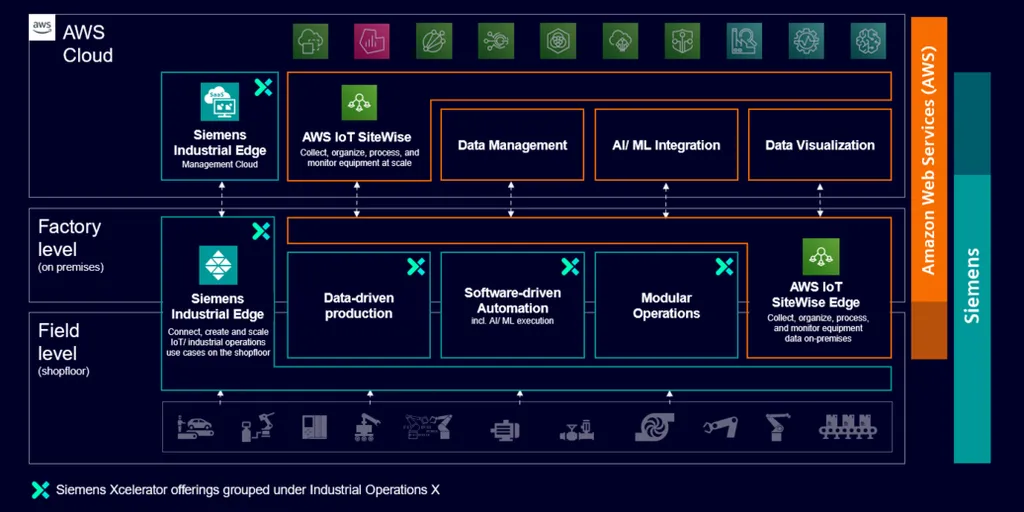
This collaboration between AWS and Siemens aims to accelerate the creation and deployment of Industrial IoT applications at scale that work seamlessly across the edge and the cloud by bringing data collection and processing closer to the machine and helping streamline your data pipeline into the cloud.
Rapid development, scalability, and repeatability of IIoT use-cases
Customers using AWS IoT SiteWise Edge and Siemens Industrial Edge benefit from a wide range of industrial connectivity options, data storage and management, security capabilities, and analytics and visualization technologies across the edge and the cloud. With this offering, automation engineers, maintenance technicians, and operations managers can decide what data needs to be collected and where it is stored, processed, or analyzed. With Industrial Edge, the IoT solution development and deployment becomes easy, secure, and scalable.
Extracting value from industrial IoT data to optimize industrial operations
With AWS IoT SiteWise Edge, businesses can increase production efficiencies, improve manufacturing operations by monitoring performance metrics, and optimize asset maintenance through remote asset monitoring using historical and real-time data.
The Siemens Industrial Edge Ecosystem is growing, with more and more edge apps and devices being available on the Siemens Industrial Edge Marketplace. With today’s announcement, Siemens and AWS bring the power of industrial automation (OT) and the cloud (IT) together to offer a streamlined machine-to-edge and edge-to-cloud experience to manufacturing customers.
To access the Siemens Industrial Edge Marketplace, please clickhere.
For AWS IoT SiteWise Edge on the Marketplace please clickhere.
Further information on Siemens Industrial Edge is availablehere.
SourceSiemens
EMR Analysis
More information on Siemens: See the full profile on EMR Executive Services
More information on Dr. Roland Busch (President and Chief Executive Officer, Siemens AG): See the full profile on EMR Executive Services
More information on Siemens Digital Industries (DI): See full profile on EMR Executive Services + https://new.siemens.com/global/en/company/about/businesses/digital-industries.html + Siemens Digital Industries (DI) is an innovation leader in automation and digitalization. Closely collaborating with partners and customers, DI drives the digital transformation in the process and discrete industries. With its Digital Enterprise portfolio, DI provides companies of all sizes with an end-to-end set of products, solutions and services to integrate and digitalize the entire value chain. Optimized for the specific needs of each industry, DI’s unique portfolio supports customers to achieve greater productivity and flexibility. DI is constantly adding innovations to its portfolio to integrate cutting-edge future technologies. Siemens Digital Industries has its global headquarters in Nuremberg, Germany, and has around 72,000 employees internationally.
More information on Cedrik Neike (Member of the Managing Board and Chief Executive Officer, Siemens Digital Industries, Siemens AG): See full profile on EMR Executive Services
More information on the Siemens Industrial Edge Marketplace: https://www.dex.siemens.com/?selected=edge + Browse, select, buy and deploy Industrial Edge software and hardware from Siemens and other companies to accelerate your shopfloor digitalization. Make the most of your machine and plant data to increase your competitive edge and generate new business models.
More information on Industrial Edge Management by Siemens: https://cache.industry.siemens.com/dl/files/989/109779989/att_1022088/v1/iem_getting_started_enUS_en-US.pdf + software portal for managing IoT solutions consisting of hardware and software in the factory. It allows all devices, applications, and users integrated into Siemens Industrial Edge to be centrally managed.
The Industrial Edge Management is the central infrastructure of Industrial Edge. The Industrial Edge Management is available as local IEM On-Premises. The Industrial Edge Management allows you to manage both connected Edge Devices and Edge Apps that you install individually on each Edge Device. The Industrial Edge Management also provide tools for managing Edge Devices and tracking analytics. Developers also have the possibility to create new projects using collaboration features and role-based access for co-developers.
More information on Reiner Brehm (Chief Executive Officer, Factory Automation, Siemens Digital Industries, Siemens AG): See the full profile on EMR Executive Services
More information on Xcelerator by Siemens: https://www.sw.siemens.com/en-US/digital-transformation/ + Xcelerator provides the engineering and manufacturing software, services and application development platform to blur the boundaries between industry domains. Companies can use this technology today to build the products of tomorrow. Turn complexity into your competitive advantage with Xcelerator.
Siemens Xcelerator consists of three pillars:
- Portfolio: A curated, modular portfolio of IOT-enabled hardware and software based on standard application programming interfaces, facilitating the integration of information technology (IT) and operational technology (OT).
- Ecosystem: A growing ecosystem of partners.
- Marketplace: Interactions and transactions among customers, partners and developers.
More information on Industrial Operations X by Siemens: https://www.siemens.com/global/en/products/automation/topic-areas/industrial-operations-x.html + From automated to adaptive production. With smart IT capabilities and software development methods, Industrial Operations X helps make your production process more flexible, autonomous and people-centric. This enables teams to overcome growing challenges in the industry sector.
Industrial Operations X enables a highly flexible and people-centric production. We integrate IT and software capabilities into automation, with machine learning and data analytics built-in to increase adaptability. Our intuitive automation solutions support teams from a range of automation and IT backgrounds.
More information on Amazon: https://www.amazon.com + Amazon is guided by four principles: customer obsession rather than competitor focus, passion for invention, commitment to operational excellence, and long-term thinking. Amazon strives to be Earth’s Most Customer-Centric Company, Earth’s Best Employer, and Earth’s Safest Place to Work. Customer reviews, 1-Click shopping, personalized recommendations, Prime, Fulfillment by Amazon, AWS, Kindle Direct Publishing, Kindle, Career Choice, Fire tablets, Fire TV, Amazon Echo, Alexa, Just Walk Out technology, Amazon Studios, and The Climate Pledge are some of the things pioneered by Amazon.
More information on Jeffrey P. Bezos (Executive Chair, Amazon): See the full profile on EMR Executive Services
More information on Andy Jassy (President and Chief Executive Officer, Amazon): See the full profile on EMR Executive Services
More information on Amazon Web Services, Inc. (AWS): https://aws.amazon.com + Amazon Web Services (AWS) is the world’s most comprehensive and broadly adopted cloud platform, offering over 200 fully featured services from data centers globally. Millions of customers—including the fastest-growing startups, largest enterprises, and leading government agencies—are using AWS to lower costs, become more agile, and innovate faster.
More information on Adam Selipsky (Chief Executive Officer, Amazon Web Services (AWS)): https://ir.aboutamazon.com/officers-and-directors/person-details/default.aspx?ItemId=5b088699-f1e4-4381-832e-f3b8ae75e52d + https://www.linkedin.com/in/adamselipsky/
More information on AWS IoT SiteWise Edge: https://aws.amazon.com/iot-sitewise/sitewise-edge/ + Collect, process, and monitor industrial equipment data on-premises.
AWS IoT SiteWise Edge software makes it easy to collect, organize, process, and monitor equipment data on-premises. It enables factory operators to get visibility into their equipment data and make decisions that help improve equipment uptime, product quality, and process efficiency. SiteWise Edge is installed on local hardware such as third-party industrial gateways and computers, or on AWS Outposts and AWS Snow Family compute devices. Since SiteWise Edge runs on-premises, local applications that use data from SiteWise Edge will continue to work even during intermittent cloud connectivity.
More information on Beecham Research: https://www.beechamresearch.com/ + Beecham Research is a leading technology market research, analysis and consulting firm with over 30 years’ experience.
We are based in the UK and USA and operate globally. Founded in 1991, we have specialised in the rapidly growing M2M (machine-to-machine) and then IoT (Internet of Things) market worldwide for more than 20 years. Most of our projects are client specific – see IoT Consultancy. We also create a range of reports aimed at improving the success rate of IoT projects, both across the IoT market and in individual sectors – see Succeed with IoT series. We frequently participate in printed media, online events/webinars and conferences as recognised thought leaders in the IoT market – see News & Events for some of our most recent contributions.
More information on Robin Duke-Woolley (Founder and Chief Executive Officer, Beecham Research): https://www.beechamresearch.com/about/ + https://www.linkedin.com/in/robin-duke-woolley-1558084/
EMR Additional Notes:
- Cloud Computing:
- Cloud computing is a general term for anything that involves delivering hosted services over the internet. … Cloud computing is a technology that uses the internet for storing and managing data on remote servers and then access data via the internet.
- Cloud computing is the on-demand availability of computer system resources, especially data storage and computing power, without direct active management by the user. Large clouds often have functions distributed over multiple locations, each location being a data center.
- Edge Computing:
- Edge computing is a form of computing that is done on site or near a particular data source, minimizing the need for data to be processed in a remote data center.
- Edge computing can enable more effective city traffic management. Examples of this include optimising bus frequency given fluctuations in demand, managing the opening and closing of extra lanes, and, in future, managing autonomous car flows.
- An edge device is any piece of hardware that controls data flow at the boundary between two networks. Edge devices fulfill a variety of roles, depending on what type of device they are, but they essentially serve as network entry — or exit — points.
- There are five main types of edge computing devices: IoT sensors, smart cameras, uCPE equipment, servers and processors. IoT sensors, smart cameras and uCPE equipment will reside on the customer premises, whereas servers and processors will reside in an edge computing data centre.
- In service-based industries such as the finance and e-commerce sector, edge computing devices also have roles to play. In this case, a smart phone, laptop, or tablet becomes the edge computing device.
- Edge Devices:
- Edge devices encompass a broad range of device types, including sensors, actuators and other endpoints, as well as IoT gateways. Within a local area network (LAN), switches in the access layer — that is, those connecting end-user devices to the aggregation layer — are sometimes called edge switches.
- Data Centers:
- A data center is a facility that centralizes an organization’s shared IT operations and equipment for the purposes of storing, processing, and disseminating data and applications. Because they house an organization’s most critical and proprietary assets, data centers are vital to the continuity of daily operations.
- Hyperscale Data Centers:
- The clue is in the name: hyperscale data centers are massive facilities built by companies with vast data processing and storage needs. These firms may derive their income directly from the applications or websites the equipment supports, or sell technology management services to third parties.
- IoT (Internet of Things):
- The Internet of Things (IoT) refers to a system of interrelated, internet-connected objects that are able to collect and transfer data over a wireless network without human intervention.
- Describes the network of physical objects—“things”—that are embedded with sensors, software, and other technologies for the purpose of connecting and exchanging data with other devices and systems over the internet.
- The Most Popular IoT Devices are:
- Smart watches are the most popular IoT devices. …
- Gaming consoles. …
- Smart TV sets and content streaming devices. …
- Voice control devices. …
- Printers. …
- Cameras. …
- Lighting appliances. …
- Smart thermostats.
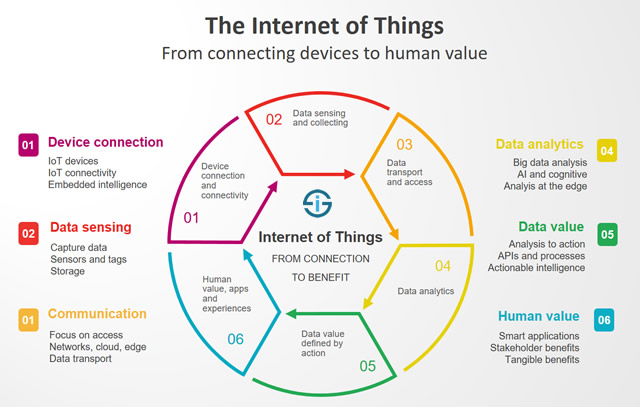
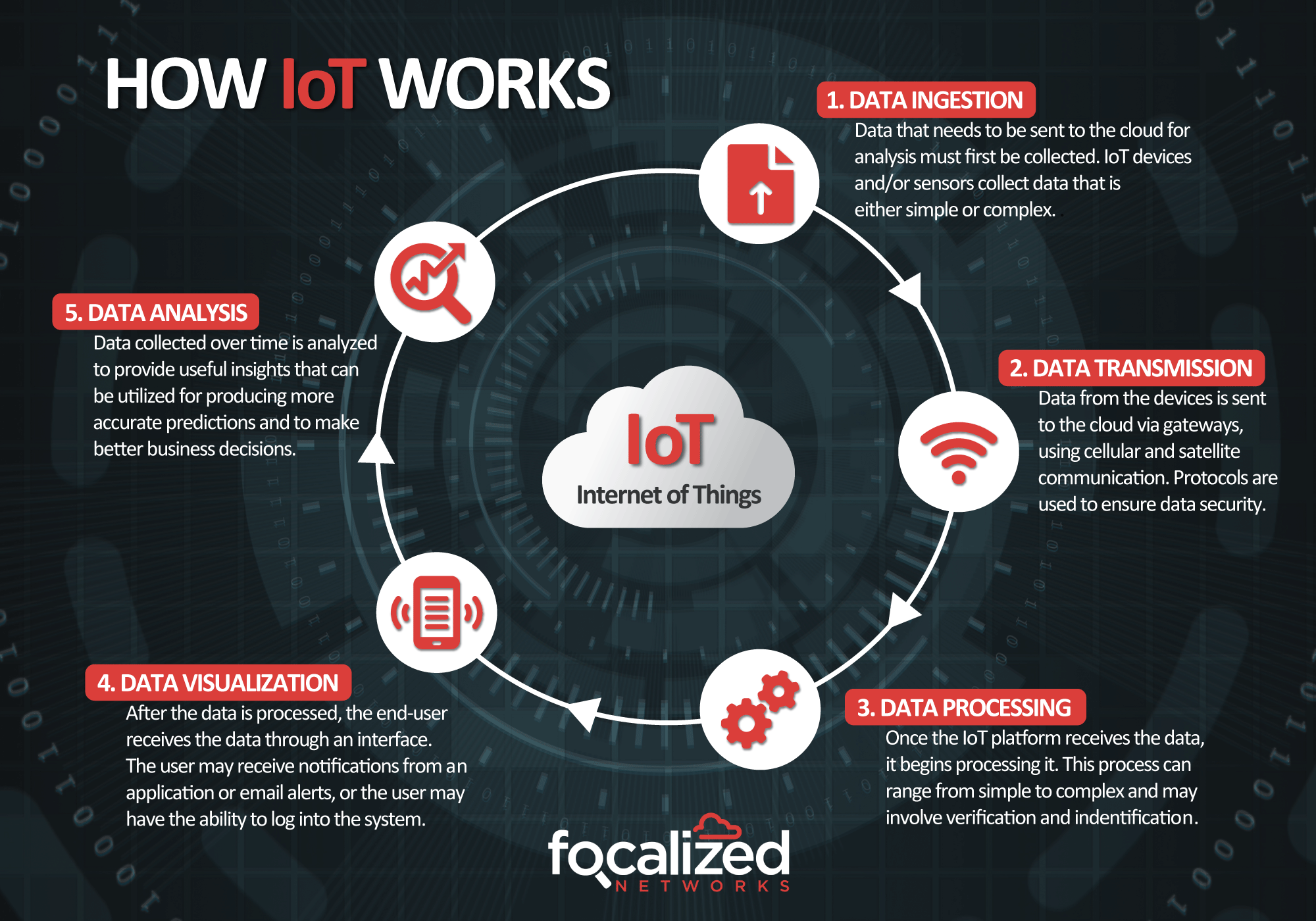
- IIoT (Industrial IoT):
- Industrial IoT (IIoT) involves collecting and analyzing sensor-generated data to support equipment monitoring and maintenance, production process analytics and control, and more. In manufacturing IT since 1989, ScienceSoft offers IIoT consulting and development to create secure IIoT solutions.
- xIoT (xTended Internet of Things):
- xIoT refers to the “xTended” Internet of Things. This xTended IoT category spans Enterprise IoT devices (cameras, printers, and door controllers), OT devices (like PLCs, HMI’s, and robotics) and Network devices (like switches, WiFi routers, and NAS).
- Information Technology (IT) & Operational Technology (OT):
- Information technology (IT) refers to anything related to computer technology, including hardware and software. Your email, for example, falls under the IT umbrella. This form of technology is less common in industrial settings, but often constitutes the technological backbone of most organizations and companies. These devices and programs have little autonomy and are updated frequently.
- Operational technology (OT) refers to the hardware and software used to change, monitor, or control physical devices, processes, and events within a company or organization. This form of technology is most commonly used in industrial settings, and the devices this technology refers to typically have more autonomy than information technology devices or programs. Examples of OT include SCADA (Supervisory Control and Data Acquisition).
- => The main difference between OT and IT devices is that OT devices control the physical world, while IT systems manage data.
- AI – Artificial Intelligence:
- https://searchenterpriseai.techtarget.com/definition/AI-Artificial-Intelligence +
- Artificial intelligence is the simulation of human intelligence processes by machines, especially computer systems. Specific applications of AI include expert systems, natural language processing, speech recognition and machine vision.
- As the hype around AI has accelerated, vendors have been scrambling to promote how their products and services use AI. Often what they refer to as AI is simply one component of AI, such as machine learning. AI requires a foundation of specialized hardware and software for writing and training machine learning algorithms. No one programming language is synonymous with AI, but a few, including Python, R and Java, are popular.
- In general, AI systems work by ingesting large amounts of labeled training data, analyzing the data for correlations and patterns, and using these patterns to make predictions about future states. In this way, a chatbot that is fed examples of text chats can learn to produce lifelike exchanges with people, or an image recognition tool can learn to identify and describe objects in images by reviewing millions of examples.
- AI programming focuses on three cognitive skills: learning, reasoning and self-correction.
- What are the 4 types of artificial intelligence?
- Type 1: Reactive machines. These AI systems have no memory and are task specific. An example is Deep Blue, the IBM chess program that beat Garry Kasparov in the 1990s. Deep Blue can identify pieces on the chessboard and make predictions, but because it has no memory, it cannot use past experiences to inform future ones.
- Type 2: Limited memory. These AI systems have memory, so they can use past experiences to inform future decisions. Some of the decision-making functions in self-driving cars are designed this way.
- Type 3: Theory of mind. Theory of mind is a psychology term. When applied to AI, it means that the system would have the social intelligence to understand emotions. This type of AI will be able to infer human intentions and predict behavior, a necessary skill for AI systems to become integral members of human teams.
- Type 4: Self-awareness. In this category, AI systems have a sense of self, which gives them consciousness. Machines with self-awareness understand their own current state. This type of AI does not yet exist.
- Machine Learning:
- Developed to mimic human intelligence. It lets the machines learn independently by ingesting vast amounts of data and detecting patterns. Many ML algorithms use statistics formulas and big data to function.
- Type of artificial intelligence (AI) that allows software applications to become more accurate at predicting outcomes without being explicitly programmed to do so. Machine learning algorithms use historical data as input to predict new output values.
- Recommendation engines are a common use case for machine learning. Other popular uses include fraud detection, spam filtering, malware threat detection, business process automation (BPA) and Predictive maintenance.
- Classical machine learning is often categorized by how an algorithm learns to become more accurate in its predictions. There are four basic approaches: supervised learning, unsupervised learning, semi-supervised learning and reinforcement learning. The type of algorithm data scientists choose to use depends on what type of data they want to predict.
- Deep Learning:
- Subset of machine learning. Deep learning enabled much smarter results than were originally possible with machine learning. Consider the face recognition example.
- Deep learning makes use of layers of information processing, each gradually learning more and more complex representations of data. The early layers may learn about colors, the next ones learn about shapes, the following about combinations of those shapes, and finally actual objects. Deep learning demonstrated a breakthrough in object recognition.
- Deep learning is currently the most sophisticated AI architecture we have developed.
- Computer Vision:
- Computer vision is a field of artificial intelligence (AI) that enables computers and systems to derive meaningful information from digital images, videos and other visual inputs — and take actions or make recommendations based on that information.
- The most well-known case of this today is Google’s Translate, which can take an image of anything — from menus to signboards — and convert it into text that the program then translates into the user’s native language.
- Generative AI:
- Generative AI technology generates outputs based on some kind of input – often a prompt supplied by a person. Some GenAI tools work in one medium, such as turning text inputs into text outputs, for example. With the public release of ChatGPT in late November 2022, the world at large was introduced to an AI app capable of creating text that sounded more authentic and less artificial than any previous generation of computer-crafted text.
- https://searchenterpriseai.techtarget.com/definition/AI-Artificial-Intelligence +
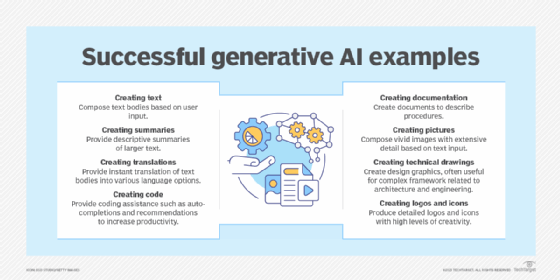
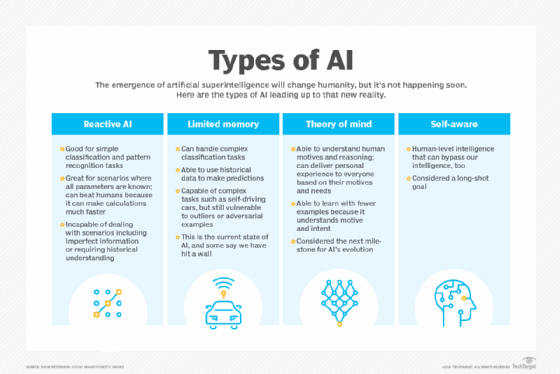
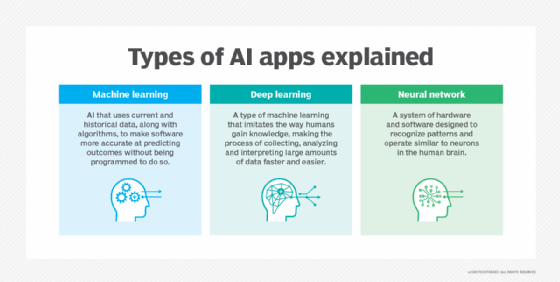
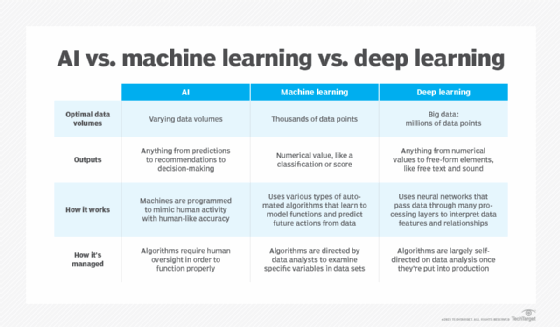
- ROI:
- Return on investment (ROI) is an approximate measure of an investment’s profitability. ROI is calculated by subtracting the initial cost of the investment from its final value, then dividing this new number by the cost of the investment, and finally, multiplying it by 100.
- According to conventional wisdom, an annual ROI of approximately 7% or greater is considered a good ROI for an investment in stocks. This is also about the average annual return of the S&P 500, accounting for inflation.

